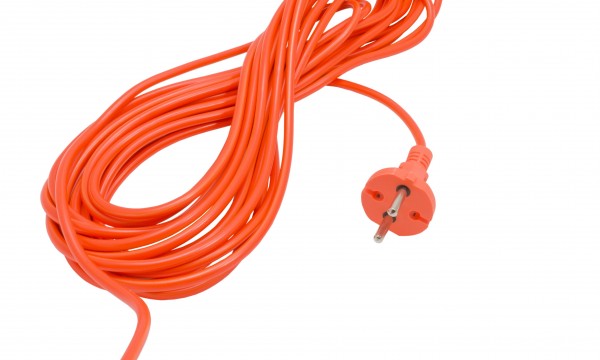Damaged plugs and nicked, frayed cords are a safety hazard and need to be replaced. Luckily, putting a new plug on is straightforward. But there are a few basic rules to follow. Here's an expert guide to fixing a damaged two-wire plug.
- Browse Categories
- All Tips
-
Home & Garden
- All
- Appliances
- Bathroom
- Cleaning
- Crafts
- Decorating
- Electrical
- Flooring
- Furniture
- Garage Door
- Gardening
- Green Living
- Heating
- Home Alarm Systems
- Home Maintenance
- Home Remedies
- Home Security
- Home Staging
- House Sitting
- Junk Removal
- Kitchen
- Lawn Care
- Lock Systems
- Moving
- Outdoor Living
- Pest Control
- Plumbing
- Renovation
- Roofing
- Snow Removal
- Storage
- Tools
- Tree Service
- Health
- Family
- Travel
- Auto
- More Tips
Your account is now active!

Fixing a damaged two-wire plug: an expert guide
September 16, 2015

A warning and safety considerations
- Wiring mistakes are common and can lead to short circuits, serious shocks and even fires.
- Never attempt any electrical work unless you know exactly what you are doing.
- The power supply must always be disconnected before starting any work, and a licensed electrician must carry out any installations.
- To prevent shocks from the metal parts of a light, lamp cords and two-wire extension cords are always polarized.
- This means the plug has a small blade for the hot wire and a wide blade for the neutral wire.
- Make the wires feeding those blades should not be reversed when you put a new plug on.
Some notes on plugs and wires
- Always use a polarized plug for a lamp, extension cord or any other cord that's polarized to begin with.
- Never use a non-polarized replacement plug with same-size blades to replace a polarized plug.
- Non-polarized plugs are often found on double-insulated tools and some appliances.
- The neutral side of the wire will usually have ribbing in the rubber insulation all along one edge, but it could also be a white wire or have a white stripe.
What you will need
- Wire cutters
- Wire strippers
- Replacement plug
Putting on a new two-wire plug
- Cut your damaged cord just below where it's frayed or just under where it connects to the nicked plug.
- Then to prepare the cut end for a new plug, cut or pull the two sides apart.
- Then strip off about 1.5 centimetres (3/4 inch) of insulation.
- Lamp and extension cords are usually 18 gauge, but if you are not sure, use your wire stripper to strip the wire through the 14 or 16 gauge slot first. If it doesn't strip cleanly, try the next gauge.
- Stranded ("STRD") wire gauges are marked on the left of your wire strippers, while solid gauges are marked on the right.
- Twist the strands of stripped wire tight, then fasten them into your replacement plug with the neutral wire going to the wide-blade side.
- Then snap or screw the plug back together to finish fixing your damaged plug.
Keep this expert guide in mind and you'll be able to safely and successfully put a new plug on a cut two-wire cord or replace a damaged two-wire plug.
National advertising powered by Mediative.com. Yellow PagesTM, Walking Fingers & DesignTM, YP.caTM, Find. & DesignTM, YellowPages.caTM, Canada411TM and YP ShopwiseTM are trademarks of Yellow Pages Digital & Media Solutions Limited in Canada. All other trademarks are the property of their respective owners. Copyright © 2018 Yellow Pages Digital & Media Solutions Limited. All Rights Reserved.
More Tips
The material on this website is provided for entertainment, informational and educational purposes only and should never act as a substitute to the advice of an applicable professional. Use of this website is subject to our terms of use and privacy policy.






